Gunsan Dongguksa Temple (동국사(군산))
2024-04-07
16, Dongguksa-gil, Gunsan-si, Jeonbuk-do
+82-63-462-5366
Dongguksa Temple was built by Japanese monk Seoneungbulgwan in 1909. The temple was run by Japanese monks for 36 years during the Japanese occupation, reverting to Korean jurisdiction when Korea was liberated in 1945. The historical temple is the only surviving Japanese-style temple in the nation.
The temple is characterized by its two main buildings, Daeungjeon Hall and Yosachae, which are connected by a corridor, and the temple’s relative lack of decoration, which stands as a sharp contrast to the brilliantly-colored Korean temples. Dongguksa Temple was officially designated as Cultural Asset in July 2003 and is now a branch temple of Seonunsa Temple in Gochang, the 24th district of the Korean Buddhist Jogye Order.
Eunpa Lake Park (Eunpa Recreation Area) (은파호수공원(은파국민관광지))
2024-04-07
Miryong-dong, Gunsan-si, Jeonbuk-do
+82-63-454-4896
Located in Gunsan, Jeollabuk-do, Eunpa Lake Park was once a reservoir built before the Joseon dynasty that supplied water to nearby farms. The lake and its surrounding mountains were designated a national tourist site in 1985, but remain historically significant as they are featured on Daedongyeojido (Grand Map of Korea), a revered document developed by geographer Kim Jeong-ho. Known for its beauty at night, the lake was befittingly dubbed “Eunpa,” which means “silvery moonlit waves.”
Eupa Lake Park is full of natural beauty. The road that runs up from the park entrance is lined with cherry trees that create a breathtaking tunnel of pink flowers each spring. This stunning cherry blossom tunnel draws crowds of families and couples each year, particularly on the weekends. Mulbit Bridge, a landmark of the Eunpa tourist site, offers an impressive view of the Music Fountain and nightscape. At the park, you’ll also find an inline skating area, a waterfront stage, and a lotus flower garden.
Sinsido Island Fishing Experience Village (신시도 어촌체험마을)
2025-01-10
83-7, Sinsido-gil, Gunsan-si, Jeonbuk-do
+82-63-463-7088
Sinsido Island is the largest of the 24 islands in the Gogunsan Island Cluster located 50 kilometers southwest of Gunsan. The highest point is Daegaksan Mountain (187 meters) on the northwest side and there is Sinchisan Mountain (142 meters) on the southeast side. Villagers tend to work in the fishing industry, catching shrimp, anchovies, hairtail, and mackerel. Farmers tend to grow rice, barley, sweet potato, chili, peas and more. The island can be reached by car and there are various activities available such as mud flats and fishing.
Dongnagwon House (동락원)
2025-03-20
33-6, Eunhaeng-ro, Wansan-gu, Jeonju-si, Jeonbuk-do
+82-63-285-3490
The Dongnagwon House in Jeonju Hanok Village provides a getaway to experience hanok stay and traditional Korean life. Affiliated with Jeonju Kijeon College, Dongnagwon is also a memorial hall dedicated to W. M. Junkin, who came to Korea as a missionary from the South Presbyterian Church of the United States in 1892. Dongnagwon is a reproduction of the old hanok houses in Jeonju from the time when W. M. Junkin was doing his missionary work in the area. It is
comprised of three buildings: Anchae (main hall), Sarangchae (guest house), and Haengnangchae (servants’ quarters).
Visitors to Dongnagwon can learn and experience traditional Korean culture such as music, crafts, and dance while inhabiting traditional lodging. In addition to providing accommodation for individual guests, Dongnagwon is also used for group accommodations or activities such as seminars, conferences, and family events. For groups of 30 or more, it is possible to rent out the entire venue (in addition to all facilities, including Seungdokdang, Seunghwadang, Cheongyuje, and the front yard).
Jeonju Donggosa Temple (동고사 (전주))
2024-04-07
103-100, Naksujeong 2-gil, Wansan-gu, Jeonju-si, Jeonbuk-do
+82-63-288-1626
Donggosa Temple, located on Seungamsan Mountain in Jeonju, is a Buddhist temple of the Taego Order. The hike up to Donggosa Temple is a refreshing climb, and the temple provides a stunning panoramic view of downtown Jeonju. The temple buildings were constructed one after another along the mountain ridge, and stand in a row on either side of Daeungjeon Hall. The temple is modest and tastefully decorated with portraits of deceased great Buddhist monks and wooden Buddhist murals. The hiking trail to the right of Donggosa Temple leads to Chimyeongjasan Martyrs Ground, which is the graveyard of persecuted Catholics from the late Joseon dynasty.
Bohae Plum Farm (보해매실농원)
2020-02-06
125-89, Yedeok-gil, Haenam-gun, Jeollanam-do
+82-61-532-4959
Established in 1979 in Haenam, Jeollanam-do by the Bohae Brewery, Bohae Plum Farm (Bohae Maesil Nongwon) is the largest green plum farm in Korea. Every spring, as maehwa (apricot flower) blossoms begin to bloom on maesil (green plum) trees, the brewery opens the farm to the public, providing an opportunity to enjoy the beautiful blossoms, and also to purchase fresh plums. To this day, the brewery produces and sells various maesil products made with the plums harvested from the farm.
Korean Tea Culture Park (한국차문화공원)
2021-01-28
775, Nokcha-ro, Boseong-gun, Jeollanam-do
+82-61-852-0918
Korean Tea Culture Park was established in honor of Boseong's specialties of green tea and music. The park is located next to the famous green tea fields in Boseong, which draw over 3 million visitors ever year. The park is comprised of Korean Tea Museum, Soricheong Performance Hall, and Bungnu Pavilion, and hosts a wide range of performances throughout the year.
Choi Champandaek (House of Choi Champan) (최참판댁)
2021-12-16
66-7, Pyeongsari-gil, Hadong-gun, Gyeongsangnam-do
+82-55-880-2651
The House of Choi Champan is known as the setting of the famous novel "Toji" ("The Land") by noted novelist Park Kyongni. Located in a small folk literature village in Agyang-myeon, Pyeongsa-ri along the Seomjingang River at the foot of Jirisan Mountain, Choi Champandaek consists of fourteen hanok (traditional Korean house) buildings.
Also used as the main set of the drama version of "Toji" (2004), Choi Champandaek gives visitors a look at the life of Korean people in the late Joseon era. The house has not only made its appearance in many films, but is also a valuable cultural asset of Hadong-gun.
The Daecheong Maru (wooden-floored hall) connected to the Sarangchae (men’s quarters in a hanok) offers a wide view of the vast field of Pyeongsa-ri and gives an opportunity to meditate and reflect while appreciating the beautiful surroundings. Located in the vicinity are numerous tourist attractions including the Pyeongsari Literature Center, Hwagae Market, and Ssanggyesa Temple. During fall season every year, Choi Champandaek hosts the Toji Literature Festival.
Yumyeongsan Mountain (유명산)
2018-07-05
Okcheon-myeon, Yangpyeong-gun & Seorak-myeon, Gapyeong-gun, Gyeonggi-do
+82-31-582-8830
Originally, no name was given to this mountain on topographical maps. But in 1973, when the Empor Alpine Club reached the mountain during a hike across the nation, the club members named it after Jin Yu-myeong, a member of the expedition. On old maps, the mountain had been called Mayusan Mountain because of the horses raised in the area, but today it is more widely known as Yumyeongsan Mountain. The trail that starts from Yangpyeong leads to an expansive and open grassland. The hiking trails are also connected to those of Mount Daebusan and Mount Sogunisan. On the summit, there is a pile of stones, and the view from the top is splendid.
Gwanaksan Mountain (관악산)
2023-01-02
Gwanak-ro, Gwanak-gu, Seoul
+82-2-879-6521
Reaching 632.2 meters in x_height, Gwanaksan Mountain is the symbol and pride of Gwanak-gu district in Seoul. Most of the cultural heritage of the district originates from Gwanaksan Mountain. Since it was designated as a city natural park in 1968, it has continued to serve as a favorite place for relaxation and excursion for Seoul citizens. The various rocky peaks and the deep valleys give the mountain a rugged feel. The mountain's size and close proximity to Seoul make it easy for Seoul residents to make a day trip.
In the spring, cherry blossoms are in full bloom near the entrance to the mountain, and a Rhododendron Festival is held when the rhododendrons are in full bloom. At the mountain's summit are Wongaksa Temple and Yeonjuam Hermitage, which were built by Taejo Yi Seong-gye (the founder of the Joseon dynasty) to ward off misfortune when he decided to move the capital to Seoul. There are also other temples and hermitages, and a ground radar observation post. Yeonjudae Hermitage, located atop a cliff, is where all the hiking trails of Gwanaksan Mountain meet.
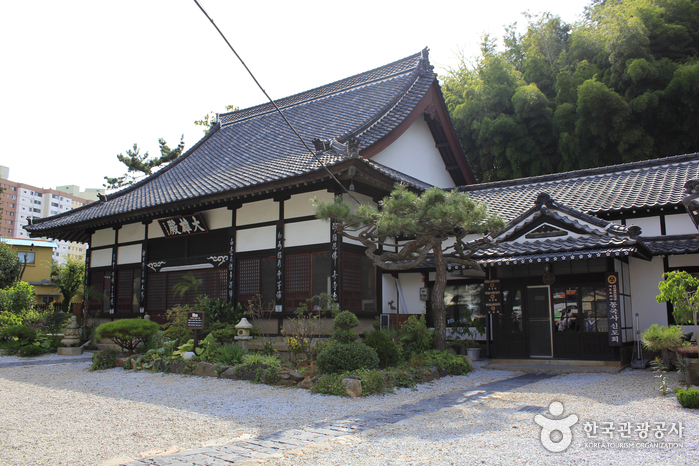
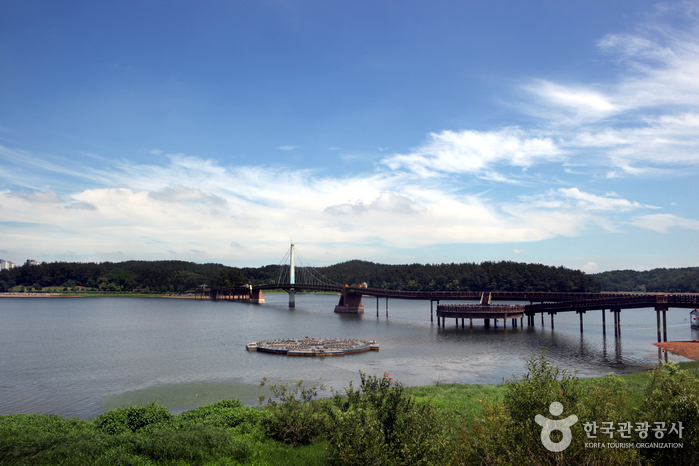
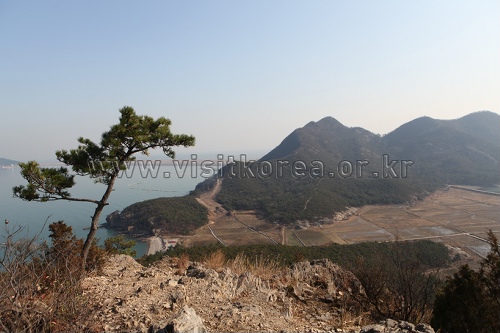
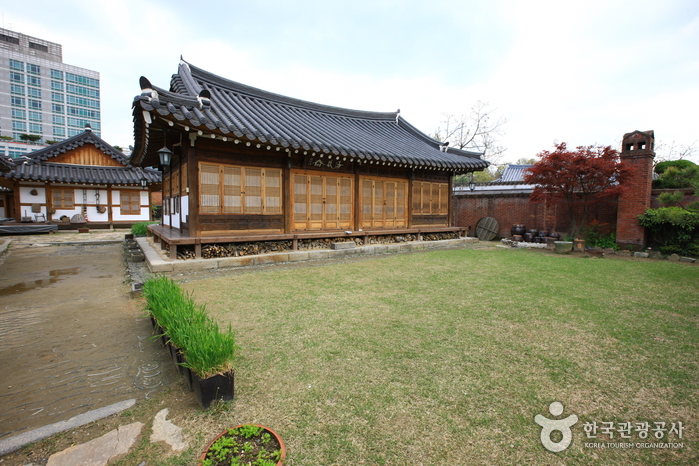
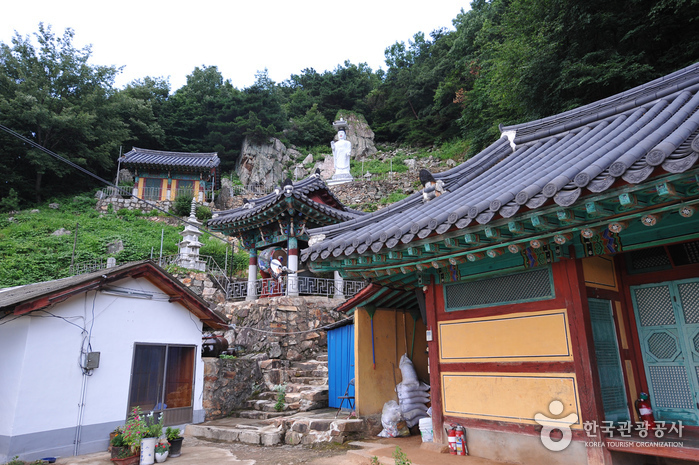
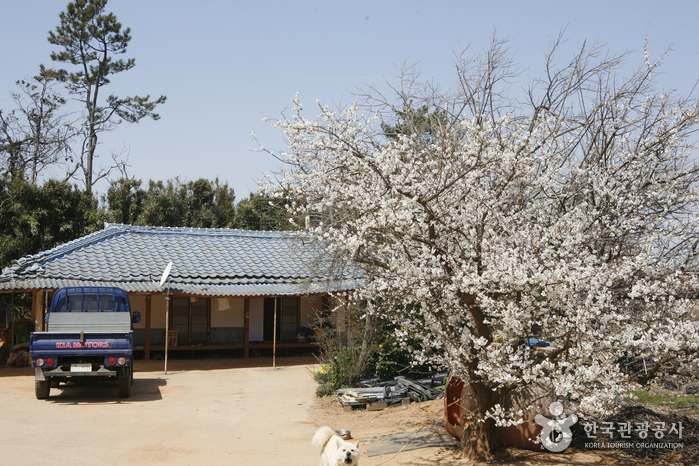
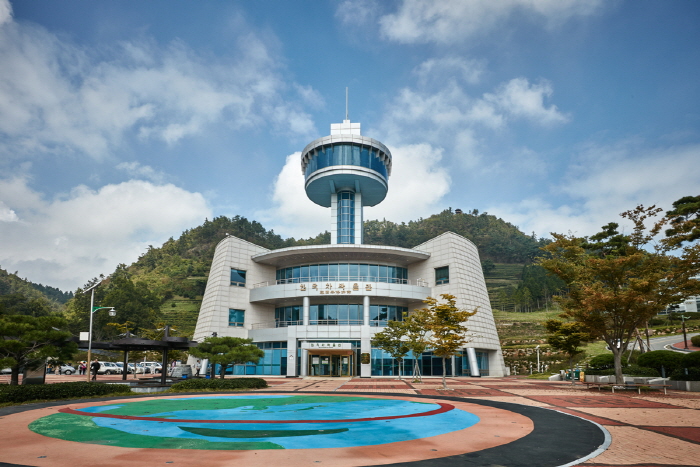
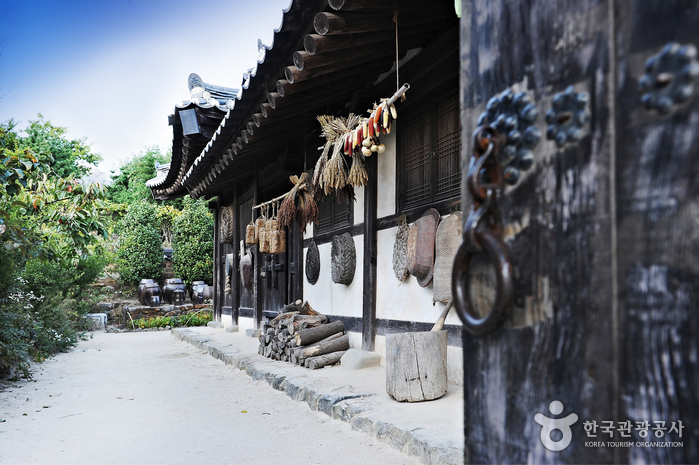
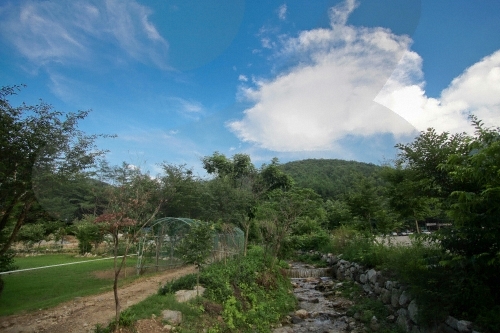
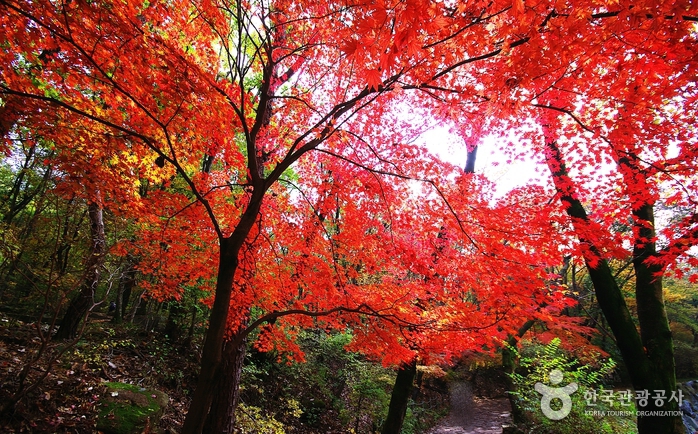
 English
English
 한국어
한국어 日本語
日本語 中文(简体)
中文(简体) Deutsch
Deutsch Français
Français Español
Español Русский
Русский